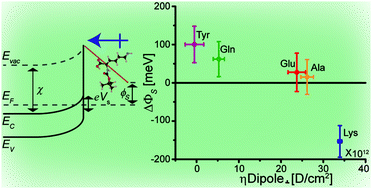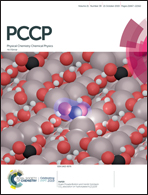Systematic modification of the indium tin oxide work function via side-chain modulation of an amino-acid functionalization layer†
Abstract
Controlled modification of the semiconductor surface work function is of fundamental importance for improvements in the efficiency of (opto-)electronic devices. Binding amino acids to a semiconductor surface through their common carboxylic group offers a versatile tool for modulation of surface properties by the choice of their side chain. This approach is demonstrated here by tailoring the surface work function of indium tin oxide, one of the most abundant transparent electrodes in organic optoelectronic devices. We find that the work function can be systematically tuned by the side chain of the amino acid, resulting in either an increase or a decrease of the work function, over a large range of ∼250 meV. This side chain effect is mostly due to alteration of the dipole component perpendicular to the surface, with a generally smaller contribution for changes in surface band bending. These findings also shed light on electronic interactions at the interface between proteins and semiconductors, which are of importance for future bio-electronic devices.



 Please wait while we load your content...
Please wait while we load your content...